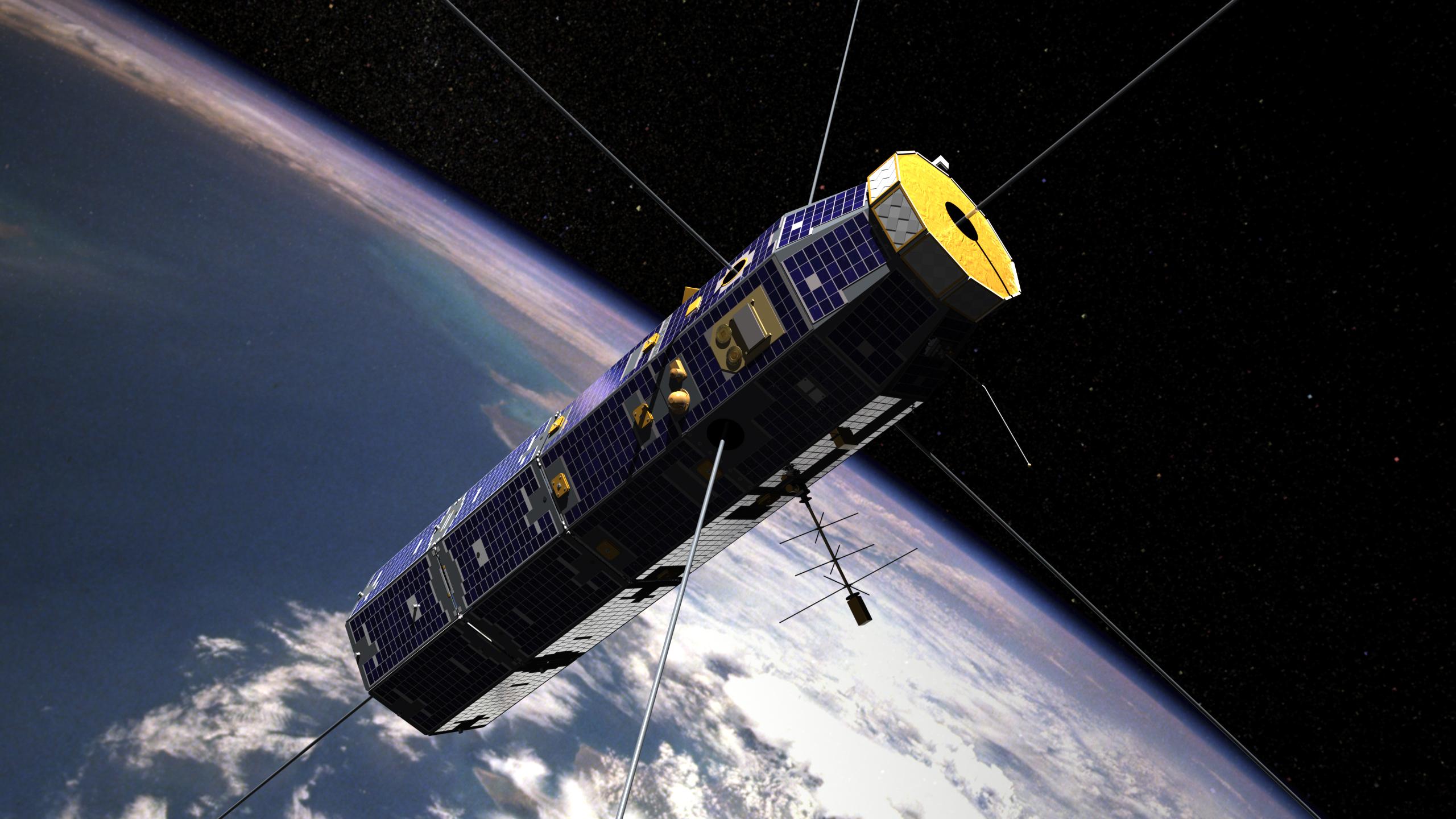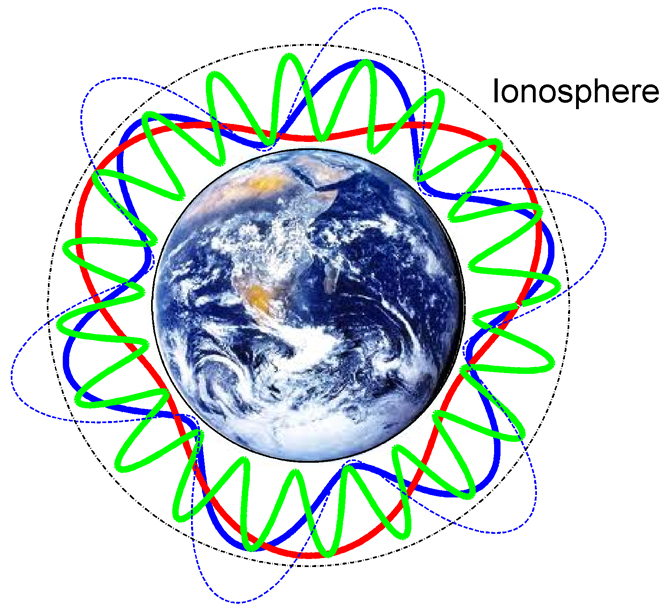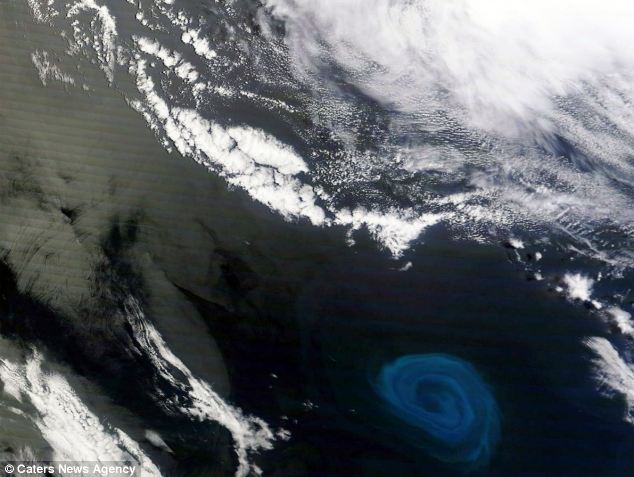It looks like you're using an Ad Blocker.
Please white-list or disable AboveTopSecret.com in your ad-blocking tool.
Thank you.
Some features of ATS will be disabled while you continue to use an ad-blocker.
share:
Voyager Captures Sounds of Interstellar Space; First Recording
They say, dont worry, no aliens.
Ok, I'll admit, it does sound a bit strange...
but also sounds familiar...as if I have heard this before.
Reminds me a bit of the "strange" sounds that
have been reported around the world, yet it is also
eerily similar to whale songs.
Hmmmmm....
o.canada.com...
Crazy sounding plasma....
But still, no aliens? ;D
They say, dont worry, no aliens.
Ok, I'll admit, it does sound a bit strange...
but also sounds familiar...as if I have heard this before.
Reminds me a bit of the "strange" sounds that
have been reported around the world, yet it is also
eerily similar to whale songs.
Hmmmmm....
NASA’s Voyager 1 spacecraft recently captured interstellar sounds and beamed them back to Earth for the rest of us.
These strange noises may sound like aliens, but they aren’t. Voyager 1′s plasma wave instrument detected ionized gas and plasma vibrating in interstellar space. The graphic at the end of the video shows the frequency of the sound waves and colour indicates how loud it is. Red is the loudest colour and blue indicates the weakest sounds.
Scientists first encountered this crazy sounding interstellar plasma back in August 2012. That’s right: This is what it sounds like in interstellar space. Be amazed.
o.canada.com...
Crazy sounding plasma....
But still, no aliens? ;D
edit on 12-9-2013 by burntheships because: (no reason given)
reply to post by burntheships
not so strange to me
Mystic - 1
Science - still catching up
www.abovetopsecret.com...
u can check out the rest of the thread and my replies to see how i explained further.
not so strange to me
Mystic - 1
Science - still catching up
www.abovetopsecret.com...
perhaps the source of the frequencies is somehow external to earth's atmosphere and bombards our atmosphere much like aurora borealis shows into our sky. this would show a direct path of communication from nature on a cosmic level reaching earth. such an external source is directly communicating with the planet and would be worthy of observation. it would demonstrate, that not only are we bombarded by light, but also sound from a cosmic source,
u can check out the rest of the thread and my replies to see how i explained further.
edit on 12-9-2013 by filledcup because: (no reason
given)
They say, dont worry, no aliens.
Yet.
But, there are new unknowns to be studied. The interstellar plasma and the unfiltered cosmic rays, etc... This initial study of these alone will be beneficial to the future of interstellar space flight, if we get to that point without destroying our crib (IMO, as a species, we are still babies).
So before "he" mentions it, I will:

This is pretty exciting, going where we have never been before.
In March 2012, there was a large eruption from the sun, the sound waaves
that reached the Voyager in were heard in Arpril 2012, and are now recorded!
In March 2012, there was a large eruption from the sun, the sound waaves
that reached the Voyager in were heard in Arpril 2012, and are now recorded!
www.nasa.gov...
NASA's Voyager 1 spacecraft officially is the first human-made object to venture into interstellar space. The 36-year-old probe is about 12 billion miles (19 billion kilometers) from our sun.
New and unexpected data indicate Voyager 1 has been traveling for about one year through plasma, or ionized gas, present in the space between stars. Voyager is in a transitional region immediately outside the solar bubble, where some effects from our sun are still evident. A report on the analysis of this new data, an effort led by Don Gurnett and the plasma wave science team at the University of Iowa, Iowa City, is published in Thursday's edition of the journal Science.
"Now that we have new, key data, we believe this is mankind's historic leap into interstellar space," said Ed Stone, Voyager project scientist based at the California Institute of Technology, Pasadena. "The Voyager team needed time to analyze those observations and make sense of them. But we can now answer the question we've all been asking -- 'Are we there yet?' Yes, we are."
reply to post by filledcup
Filledcup,
Thanks for the link to your thread, will check it out.
As with the more recent discoveries of The Schuman Resonance,
I think we have a long ways to go in understanding the connections.
Filledcup,
Thanks for the link to your thread, will check it out.
As with the more recent discoveries of The Schuman Resonance,
I think we have a long ways to go in understanding the connections.
Krakatoa
there are new unknowns to be studied. The interstellar plasma and the unfiltered cosmic rays, etc... This initial study of these alone will be beneficial to the future of interstellar space flight, if we get to that point/quote]
Indeed, and I really do think we will get there.
I try and keep and open mind about alien life, while
remaining on the cautious side.
2WitnessesArrived
Sounds like angel communication to me.
Not as far out as it seems, I am excited to hear more
of what they can record.
burntheships
reply to post by filledcup
Filledcup,
Thanks for the link to your thread, will check it out.
As with the more recent discoveries of The Schuman Resonance,
I think we have a long ways to go in understanding the connections.
Sound man.. sound create vibration, vibration create border, border constrict space into energy, light formed.. matter formed out of light by various frequencies defining different borders in subatomic structure, man was made from the atoms.. evolution took place after all the first of each creature was created by the Supreme Consciousness and change according to their environment programmed by nature (inherent, innate protocols/characteristics)
all in the bible. there is more.
edit on 12-9-2013 by filledcup because: (no reason given)
edit on 12-9-2013 by filledcup
because: (no reason given)
reply to post by burntheships
This thread has got Star trek written all over it. In good humor of course. Don't worry, V'Ger will be back.
Now in all honesty, I think that this is totally cool. But what if something does bite the bait? Because that's exactly what Voyager is.
This thread has got Star trek written all over it. In good humor of course. Don't worry, V'Ger will be back.
Now in all honesty, I think that this is totally cool. But what if something does bite the bait? Because that's exactly what Voyager is.
reply to post by burntheships
It sure isn't. Thanks for the post. Doesn't the angel communication on your video sound alot like those angel sound messages in Beyonces song "Bow Down".
It sure isn't. Thanks for the post. Doesn't the angel communication on your video sound alot like those angel sound messages in Beyonces song "Bow Down".
reply to post by burntheships
Very cool sound. Could it be some kind of reverberation from the equipment? I mean, either way I enjoyed listening.
Very cool sound. Could it be some kind of reverberation from the equipment? I mean, either way I enjoyed listening.
reply to post by filledcup
Yes, sound waves and light, like lightening.
Lightening bursts create electromagnetic waves,and some waves...
if they combine actually create a "heartbeat" that is found to be measured as
The Schumann resonance.
NASA's Vector Electric Field Instrument (VEFI) aboard the U.S. Air Force's
Communications/Navigation Outage Forecast System (C/NOFS) satellite
can detect this resonance from space.

Credit: NASA/Goddard Space Flight Center

Credit: NASA/Simoes
Yes, sound waves and light, like lightening.
Lightening bursts create electromagnetic waves,and some waves...
if they combine actually create a "heartbeat" that is found to be measured as
The Schumann resonance.
NASA's Vector Electric Field Instrument (VEFI) aboard the U.S. Air Force's
Communications/Navigation Outage Forecast System (C/NOFS) satellite
can detect this resonance from space.
NASA Goddard's Vector Electric Field Instrument (VEFI) aboard the U.S. Air Force's Communications/Navigation Outage Forecast System (C/NOFS) -- shown here -- has detected a special kind of low frequency wave leaking out into space from Earth's lower atmosphere.
nanopatentsandinnovations.blogspot.com...

Credit: NASA/Goddard Space Flight Center

Credit: NASA/Simoes
/NOFS, of course, measured them much higher – at altitudes of 250 to 500 miles. While models suggest that the resonances should be trapped under the ionosphere, it is not unheard of that energy can leak through. So the team began looking for waves of the correct, very low frequency in the observations from VEFI – an instrument built at NASA Goddard with high enough sensitivity to spot these very faint waves. And the team was rewarded. They found the resonance showing up in almost every orbit C/NOFS made around Earth, which added up to some 10,000 examples.
TDawgRex
I think that this is totally cool.
Myself as well.
But what if something does bite the bait? Because that's exactly what Voyager is.
Well, you know what they say, cant catch anything if your not fishing.
Here ya go. Star Trek!
NASA Channels Star Trek During Voyager Interstellar Announcement
edit on 12-9-2013 by burntheships because: (no reason given)
reply to post by burntheships
ive actually never really studied the schumann resonance. have heard of it though, but it sounds like something i should try to make some time to look at this weekend.
there's also this thread.. which i think has a connection
www.abovetopsecret.com...
attributing magnetic anomalies to the bermuda triangle.. it seems the earth itself generates waves as well. so we have waves shooting up from the earth's center possibly.. as well as waves shooting down to the earth's surface from outer space.
this is communication!
not necessarily that humans can understand. but this is cosmic/interplanetary communication going on. without this propogation i fear all will collapse, the environment and atmosphere, the rotation of the spheres in our solar system. sound is powerful!
oh yes.. and the underwater storms/whirlpool/tornadoes. all very much possibly related to magnetic flux patterns taking a spiral formation. sound and energy = magnetism/electromagnetism
www.abovetopsecret.com...

ive actually never really studied the schumann resonance. have heard of it though, but it sounds like something i should try to make some time to look at this weekend.
there's also this thread.. which i think has a connection
www.abovetopsecret.com...
attributing magnetic anomalies to the bermuda triangle.. it seems the earth itself generates waves as well. so we have waves shooting up from the earth's center possibly.. as well as waves shooting down to the earth's surface from outer space.
this is communication!
not necessarily that humans can understand. but this is cosmic/interplanetary communication going on. without this propogation i fear all will collapse, the environment and atmosphere, the rotation of the spheres in our solar system. sound is powerful!
oh yes.. and the underwater storms/whirlpool/tornadoes. all very much possibly related to magnetic flux patterns taking a spiral formation. sound and energy = magnetism/electromagnetism
www.abovetopsecret.com...

edit on 12-9-2013 by filledcup because: (no reason given)
edit on 12-9-2013 by filledcup because: (no
reason given)
reply to post by 2WitnessesArrived
Welcome.
Dont know about the beyonce song, I dont follow her music.
Welcome.
Dont know about the beyonce song, I dont follow her music.
reply to post by antar
From what I understand, they first heard the sounds last year, after an
eruption from the sun, a solar flare....
From what I understand, they first heard the sounds last year, after an
eruption from the sun, a solar flare....
www.jpl.nasa.gov...
The plasma wave science team reviewed its data and found an earlier, fainter set of oscillations in October and November 2012. Through extrapolation of measured plasma densities from both events, the team determined Voyager 1 first entered interstellar space in August 2012.
"We literally jumped out of our seats when we saw these oscillations in our data -- they showed us the spacecraft was in an entirely new region, comparable to what was expected in interstellar space, and totally different than in the solar bubble," Gurnett said. "Clearly we had passed through the heliopause, which is the long-hypothesized boundary between the solar plasma and the interstellar plasma."
The new plasma data suggested a timeframe consistent with abrupt, durable changes in the density of energetic particles that were first detected on Aug. 25, 2012. The Voyager team generally accepts this date as the date of interstellar arrival. The charged particle and plasma changes were what would have been expected during a crossing of the heliopause.
edit on 12-9-2013 by burntheships because: (no reason given)
reply to post by burntheships
Here you go something outside the box..
What if whales aren't really native to Earth?
Reminds me a bit of the "strange" sounds that
have been reported around the world, yet it is also
eerily similar to whale songs.
Here you go something outside the box..
What if whales aren't really native to Earth?
reply to post by burntheships
Lol me neither, I just remembered hearing similar sounds on that video.
Lol me neither, I just remembered hearing similar sounds on that video.
tsurfer2000h
reply to post by burntheships
Reminds me a bit of the "strange" sounds that
have been reported around the world, yet it is also
eerily similar to whale songs.
Here you go something outside the box..
What if whales aren't really native to Earth?
yup those too.. explained in my snowflakes thread.
sounds are penetrating to the earth's surface from bombardment of the magnetosphere. the magnetosphere opens or gives way at certain levels of concentration and depending on the intensity.. i believe it is possible for the sound to be heard coming from the skies as with the "Sky Trumpets" issue around the world. some is split into light(aurora bourealis/northern lights), and some is split into sound/radio interference/frequency
Portals in space.. the sun communicating with the earth
www.abovetopsecret.com...
edit on 12-9-2013 by filledcup because: (no reason given)
new topics
-
Only two Navy destroyers currently operational as fleet size hits record low
Military Projects: 7 hours ago
top topics
-
George Stephanopoulos and ABC agree to pay $15 million to settle Trump defamation suit
Mainstream News: 12 hours ago, 17 flags -
Only two Navy destroyers currently operational as fleet size hits record low
Military Projects: 7 hours ago, 7 flags
active topics
-
-@TH3WH17ERABB17- -Q- ---TIME TO SHOW THE WORLD--- -Part- --44--
Dissecting Disinformation • 3694 • : RelSciHistItSufi -
They Know
Aliens and UFOs • 87 • : UsernameNotFoundAgain -
Encouraging News Media to be MAGA-PAF Should Be a Top Priority for Trump Admin 2025-2029.
Education and Media • 90 • : Coelacanth55 -
Nov 2024 - Former President Barack Hussein Obama Has Lost His Aura.
US Political Madness • 16 • : Coelacanth55 -
Mood Music Part VI
Music • 3735 • : BrucellaOrchitis -
A Bunch of Maybe Drones Just Flew Across Hillsborough County
Aircraft Projects • 83 • : charlyv -
The Mystery Drones and Government Lies
Political Conspiracies • 72 • : tarantulabite1 -
Only two Navy destroyers currently operational as fleet size hits record low
Military Projects • 1 • : alwaysbeenhere2 -
A priest who sexually assaulted a sleeping man on a train has been jailed for 16 months.
Social Issues and Civil Unrest • 30 • : alwaysbeenhere2 -
George Stephanopoulos and ABC agree to pay $15 million to settle Trump defamation suit
Mainstream News • 11 • : WeMustCare
